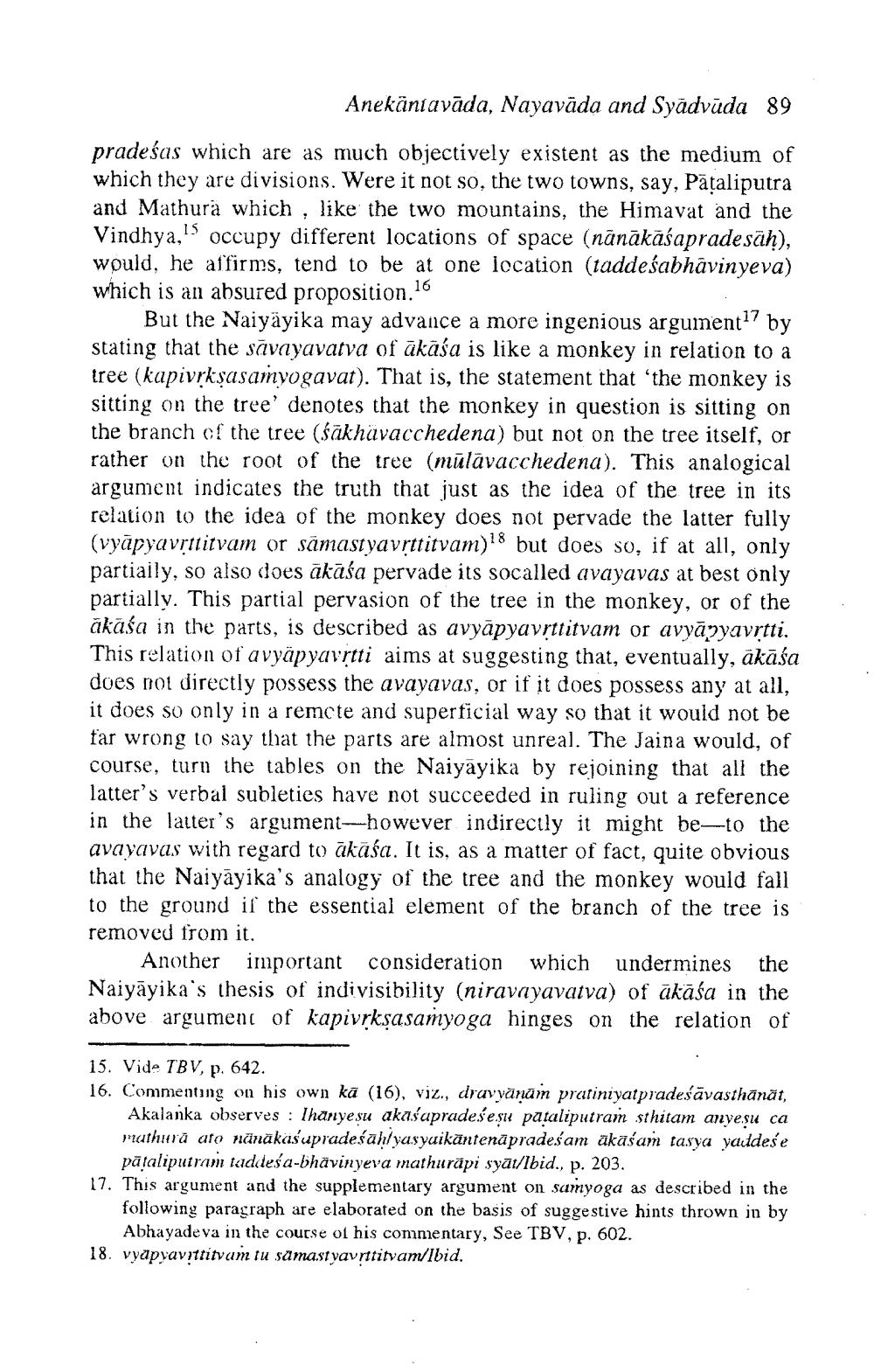________________
Anekantavāda, Nayavāda and Syädvūda 89
pradeśas which are as much objectively existent as the medium of which they are divisions. Were it not so, the two towns, say, Pāțaliputra and Mathura which , like the two mountains, the Himavat and the Vindhya,'' occupy different locations of space (nānākāśapradesah), would, he affirms, tend to be at one location (taddeśabhāvinyeva) which is an absured proposition.
But the Naiyāyika may advance a more ingenious argument?7 by stating that the sāvayavatva of ākāśa is like a monkey in relation to a tree (kapivrkşasamyogavat). That is, the statement that 'the monkey is sitting on the tree' denotes that the monkey in question is sitting on the branch of the tree (śākhävacchedena) but not on the tree itself, or rather on the root of the tree (mūlāvacchedena). This analogical argument indicates the truth that just as the idea of the tree in its relation to the idea of the monkey does not pervade the latter fully (vyāpyavrttitvam or samastyavrttitvam)" but does so, if at all, only partiaily, so also does ākāśa pervade its socalled avayavas at best only partially. This partial pervasion of the tree in the monkey, or of the ākāśa in the parts, is described as avyāpyavrttitvam or avyāpyavrtti. This relation of avyäpyavrtti aims at suggesting that, eventually, ākāśa does not directly possess the avayavas, or if it does possess any at all, it does so only in a remcte and superficial way so that it would not be
ong to say that the parts are almost unreal. The Jaina would, of course, turn the tables on the Naiyayika by rejoining that all the latter's verbal subieties have not succeeded in ruling out a reference in the latter's argument-however indirectly it might be to the avayavas with regard to ākāśa. It is, as a matter of fact, quite obvious that the Naiyāyika's analogy of the tree and the monkey would fall to the ground if the essential element of the branch of the tree is removed from it.
Another important consideration which undermines the Naiyāyika's thesis of indivisibility (niravayavatva) of akāśa in the above argument of kapivrksasamyoga hinges on the relation of
15. Vide TBV, p. 642. 16. Commenting on his own ka (16), viz., dravyänäin pratiniyatpradeśāvasthänät,
Akalanka observes : Ihanyesu akasapradeśesu pataliputram sthitam anyeșu ca mathură ato nānākasupradeśah/yasyaikāntenāpradeśam akāšam tasya yauddes e
pātaliputram taddeśa-bhävinyeva mathurāpi syāt/Ibid., p. 203. 17. This argument and the supplementary argument on samyoga as described in the
following paragraph are elaborated on the basis of suggestive hints thrown in by
Abhayadeva in the course of his commentary, See TBV, p. 602. 18. vyäpyavittitvam tu samastyavrttitvam/Ibid.




